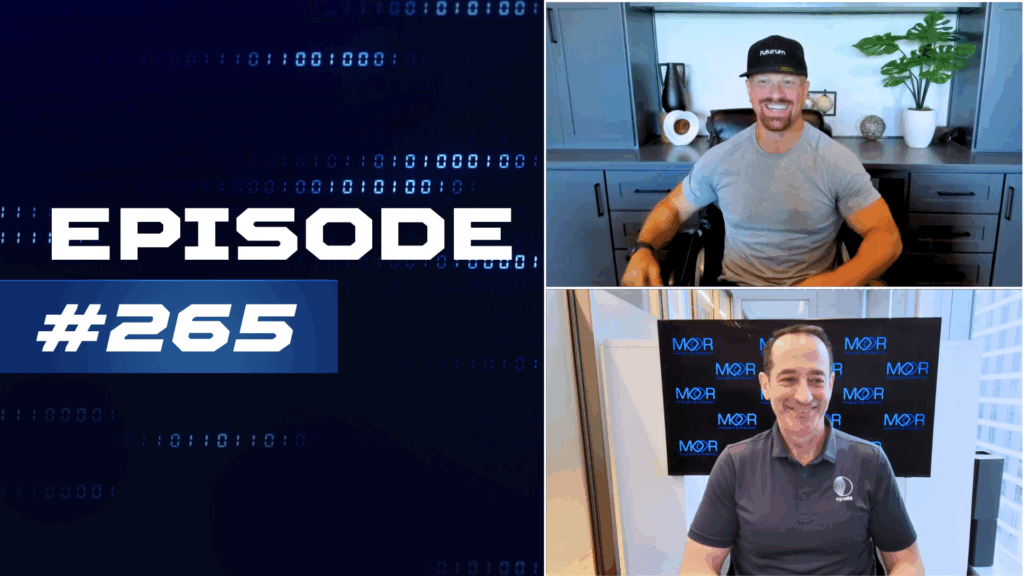The News: Intel’s third quarter (Q3) revenue tallied $14.16 billion in Q3 of 2023, beating analyst consensus estimates of $13.53 billion from Investing.com, as Intel reported its latest results for the period ending September 30. Intel also reported non-generally accepted accounting principles (non-GAAP) diluted earnings per share (EPS) of $0.41 for Q3, which beat analyst estimates of $0.22 per share. Read the full Q3 2023 earnings press release on the Intel investors website.
Intel Q3 Revenue Hits $14.16 Billion, Beating Analyst Estimates
Analyst Take: Intel’s Q3 earnings numbers show strong progress for the chipmaker even as some of the numbers give mixed messages. While Intel’s Q3 revenue of $14.16 billion beat analyst estimates for the quarter, the company’s quarterly revenue figure is down by 8% year-over-year (YoY) from 2022, when Intel booked $15.3 billion in revenue in Q3. That might seem disappointing – but only until you view it in a deeper context.
Here is why: the past few years have been tough for Intel as some of its chip designs faced multiple delays that slowed its progress in the market. But Intel today is showing vast signs of improvement under the leadership of CEO Pat Gelsinger, who returned to the company in February 2021 to take Intel into the future. Gelsinger had been with Intel for 30 years before leaving in 2009 to become the president and COO of EMC and then the CEO of VMware in 2012. Gelsinger’s heart was always with Intel, and he departed in 2009 after being overlooked for the CEO’s post.
His return to Intel, however, was a personal triumph, and it has been good for Intel as well. Under Gelsinger, the company is continuing to advance his agenda to build more chip plants, to design and build new and more powerful chips as part of Gelsinger’s “IDM 2.0” plans that he unveiled a month after his arrival. IDM 2.0 is what Gelsinger described as a major evolution of Intel’s original Integrated Device Manufacturing (IDM) model for chip production. Part of the IDM 2.0 strategy is a goal of achieving five new chip nodes in 4 years to ramp up chip development and production on the world stage. In a conversation with Gelsinger, he was very optimistic about the progress of this goal and Intel performance gains in general.
And though the company’s revenue figure is down in Q3 YoY, the good news is that the market still believes in Intel, as evidenced by its Q3 2023 revenue and EPS numbers exceeding analyst expectations. This news is particularly notable given the past few tough years that Intel has endured. And while YoY growth in Intel’s core businesses is not yet where we want it to be, things are looking up and progressing, and that is evident across Intel and its position in the marketplace.
Here are Intel’s Q3 2023 earnings by the numbers:
- Q3 2023 revenue of $14.16 billion, down 8% from $15.3 billion YoY. The revenue figure, however, beat consensus estimates of $13.53 billion from analysts at Investing.com.
- Q3 2023 non-GAAP net income of $1.74 billion for Q3, up 14% from $1.53 billion YoY.
- Q3 2023 non-GAAP diluted EPS of $0.41 per share, up from $0.37 per share YoY. The Q3 EPS also beat analyst estimates of $0.22 per share from Investing.com.
- Q3 2023 non-GAAP gross margin of $6.5 billion, down 8% from $7.04 billion YoY.
- Q3 2023 non-GAAP gross margin by percentage of 45.8%, up from 45.9% YoY.
In addition, Intel’s Q3 2023 results exceeded the high end of the company’s guidance for the third consecutive quarter as the company continues to execute its strategy with momentum across its operations.
Intel’s Q3 Revenue by Business Units
Intel saw growth in Q3 revenue in its Mobileye automotive technology business unit and in its Intel Foundry Services (IFS) chip making unit, while it had revenue decline in its Client Computing Group (CCG), Data Center and AI (DCAI), and Network and Edge (NEX) business units.
In the Mobileye unit, revenue hit $530 million, up 18% from $450 million YoY, while the IFS unit had Q3 revenue of $311 million, up 299% from $78 million YoY.
Overall revenue in Q3 in the CCG unit hit $7.9 billion, which was down 3% from $8.1 billion YoY. That included desktop chip revenue of $2.8 billion, which was down from $3.2 billion YoY, and notebook chip revenue of $611 million, which is up by 23% from $498 million YoY. Other revenue in the CCG unit totaled $611 million, up 23% from $498 million YoY.
DCAI unit revenue for Q3 came in at $3.8 billion, down 10% from $4.23 billion YoY, while NEX revenue was $1.45 billion, down 32% from $2.13 billion YoY. All other business unit revenue totaled $186 million, down 37% from $294 million YoY.
Intel’s Q3 Business Highlights
As part of its Q3 earnings announcement, Intel executives said that the company is on track to meet its goal of achieving five nodes in 4 years as part of its plans to regain global transistor and power performance leadership by 2025. The five nodes are made up of the Intel 7 process, which is already in production, as well as the Intel 4 process node for the Intel Core Ultra processors that are now being produced (code name Meteor Lake). There will also be a new and enhanced node known as Intel 3, and finally the Intel 20A and Intel 18A chips, which will be built in 2nm and 1.8nm nodes.
In addition, during the quarter, Intel opened Fab 34 in Leixlip, Ireland, for the Intel 4 chips to help the company meet its goal of creating a geographically balanced, secure, and resilient supply chain for its products. Along with Intel’s planned wafer fabrication facility in Magdeburg, Germany, and a planned assembly and test facility in Wrocław, Poland, Intel said it is building its own semiconductor manufacturing supply chain system across Europe.
Intel has also submitted four major manufacturing plant proposals in Arizona, New Mexico, Ohio, and Oregon, representing more than $100 billion of US manufacturing and research investments, to the US Department of Commerce’s CHIPS Program Office. These efforts are also part of the IDM 2.0 strategy to increase chip production.
Also notable in Q3 was Intel’s announcement that it is planning to separate its Programmable Solutions Group (PSG) operations into a standalone business to help the unit grow more effectively in the volatile Field Programmable Gate Array (FPGA) marketplace.
Intel Q3 Results: What It All Means
Overall, we see Q3 as a strong quarter for Intel, despite some competitive challenges that were simultaneously revealed in the marketplace. That included a Reuters report that NVIDIA has “quietly begun designing central processing units (CPUs) that would run Microsoft’s Windows operating system and use technology from Arm Holdings,” according to sources familiar with the situation. Reuters also reported that Advanced Micro Devices (AMD) is also planning to make computer chips using Arm technology that would compete with Intel.
Yet despite those potential developments, we remain bullish on Intel and its roadmap and strategy under the leadership of Gelsinger and his executive team.
Yes, Intel and other big tech companies such as Microsoft, Google, and Amazon have been facing tough macroeconomic conditions in their markets, which has led to selling despite largely solid tech earnings, but in the long term, we are seeing progress and positive indicators.
We spoke with Gelsinger about the Q3 results and he was very optimistic about the progress of Intel’s 5 in 4 IDM 2.0 strategy and the direction the company is taking. At the same time, Intel’s IFS unit saw outsized growth in Q3 with new packaging and design wins, which give us positive feelings on its future.
And Gelsinger directly took on the rumors of new Arm-based chip variants being introduced to the marketplace, arguing that they will likely be low volume designs and that Intel will keep pursuing performance gains even as any new chips start arriving.
One place where we would like to see more growth for Intel is in data center AI, which we see as a big opportunity for immediate revenue growth as we see more of a shift to inference where CPUs and accelerators will be more prevalent.
Q3 was a solid overall win for Intel, yet there is still work to do, we believe. We look forward to tracking the company’s progress and continuing innovations into the future.
Daniel Newman and his co-host of The Six Five Webcast, Patrick Moorhead of Moor Insights and Strategy discussed Intel’s earnings in their latest episode. Check it out here and be sure to subscribe to The Six Five Webcast so you never miss an episode.
Disclosure: The Futurum Group is a research and advisory firm that engages or has engaged in research, analysis, and advisory services with many technology companies, including those mentioned in this article. The author does not hold any equity positions with any company mentioned in this article.
Analysis and opinions expressed herein are specific to the analyst individually and data and other information that might have been provided for validation, not those of The Futurum Group as a whole.
Other Insights from The Futurum Group:
Intel’s FPGA Unit Becoming a Separate Business To Drive FPGA Growth
Intel’s AI Portfolio with Greg Lavender & Sandra Rivera – Six Five On the Road
Intel Q2 2023 Results: Return to Profitability Energizes Turnaround
Author Information
Daniel is the CEO of The Futurum Group. Living his life at the intersection of people and technology, Daniel works with the world’s largest technology brands exploring Digital Transformation and how it is influencing the enterprise.
From the leading edge of AI to global technology policy, Daniel makes the connections between business, people and tech that are required for companies to benefit most from their technology investments. Daniel is a top 5 globally ranked industry analyst and his ideas are regularly cited or shared in television appearances by CNBC, Bloomberg, Wall Street Journal and hundreds of other sites around the world.
A 7x Best-Selling Author including his most recent book “Human/Machine.” Daniel is also a Forbes and MarketWatch (Dow Jones) contributor.
An MBA and Former Graduate Adjunct Faculty, Daniel is an Austin Texas transplant after 40 years in Chicago. His speaking takes him around the world each year as he shares his vision of the role technology will play in our future.





